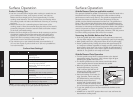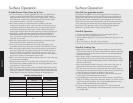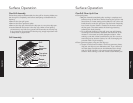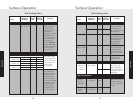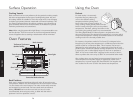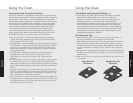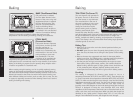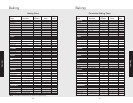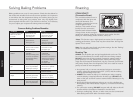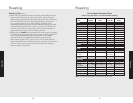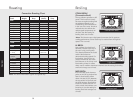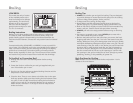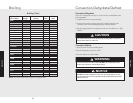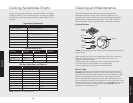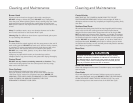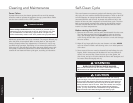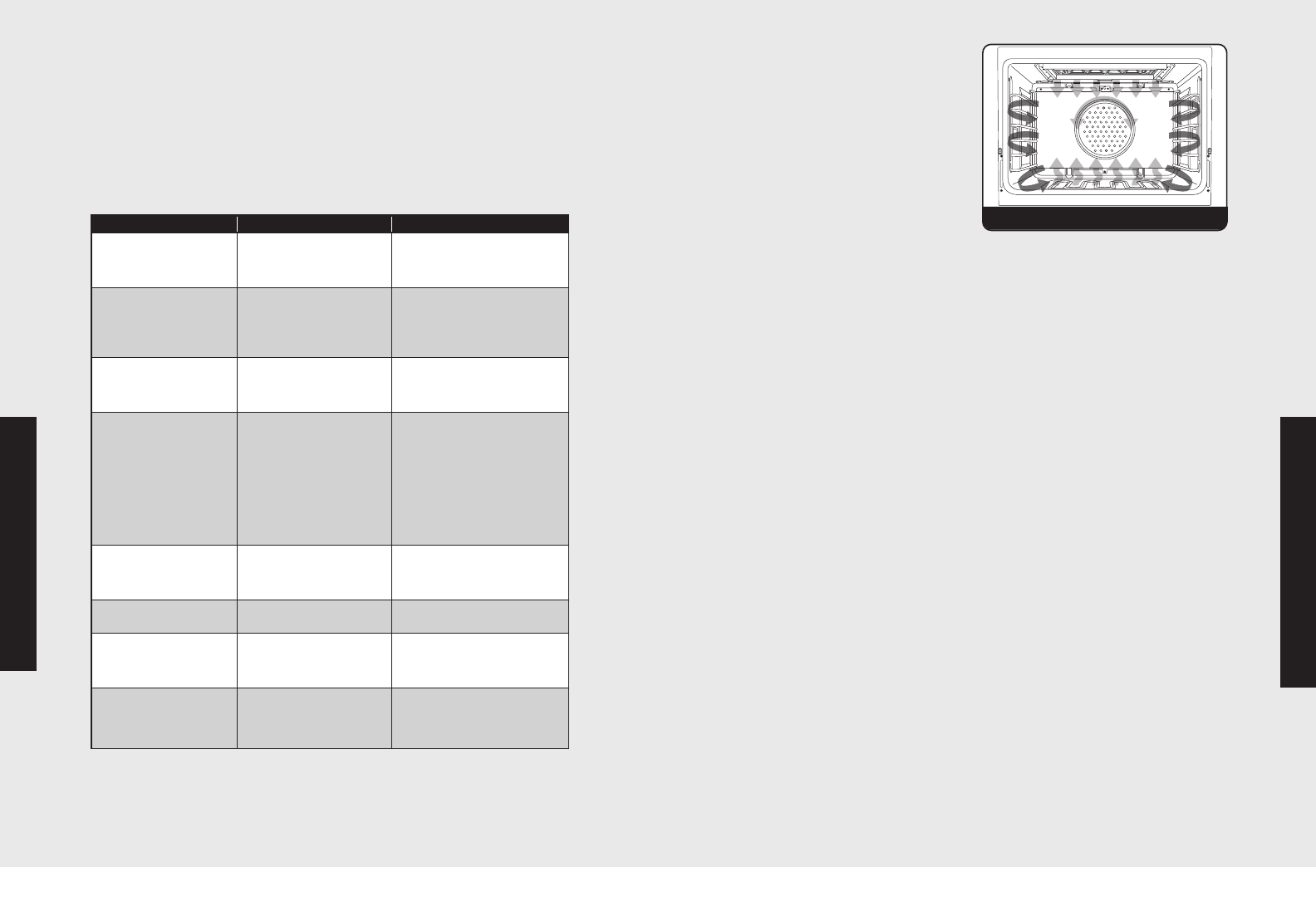
Operation
35
34
Operation
Solving Baking Problems
Baking problems can occur for many reasons. Check the chart below for
the causes and remedies for the most common problems. It is important
to remember that the temperature setting and cooking times you are
accustomed to using with your previous oven may vary slightly from
those required with this oven. If you find this to be true, it is necessary
for you to adjust your recipes and cooking times accordingly.
CONV ROAST*
(Convection Roast)
The convection element runs in
conjunction with the inner and
outer broil elements. The
reversible convection fan runs at
a higher speed in each
direction. This transfer of heat
(mainly from the convection
element) seals moisture inside
of large roasts. A time savings is
gained over existing, single fan convection roast modes. Use this
setting for whole turkeys, whole chickens, hams, etc.
*Note: This function uses a high-speed convection fan for optimum
cooking performance. Some noise may be noticed from this high fan
speed. This is normal.
Note: You can also roast foods using bake settings. See the “Baking”
section for additional information.
Roasting Tips
ALWAYS
use the broiler pan and grid supplied with each oven. The
hot air must be allowed to circulate around the item being roasted.
DO NOT cover what is being roasted. Convection roasting seals in
juices quickly for a moist, tender product. Poultry will have a light,
crispy skin and meats will be browned, not dry or burned. Cook meats
and poultry directly from the refrigerator. There is no need for meat or
poultry to stand at room temperature.
• As a general rule, to convert conventional recipes to convection
recipes, reduce the temperature by 25°F (-3.9°C) and the cooking
time by approximately 10 to 15%.
•
ALWAYS
roast meats fat side up in a shallow pan using a roasting
rack. No basting is required when the fat side is up. DO NOT add
water to the pan as this will cause a steamed effect. Roasting is a dry
heat process.
• Poultry should be placed breast side up on a rack in a shallow pan.
Brush poultry with melted butter, margarine, or oil before and during
roasting.
• For convection roasting, DO NOT use pans with tall sides as this will
interfere with the circulation of heated air over the food.
• If using a cooking bag, foil tent, or other cover, use the conventional
bake setting rather than either convection setting.
Problems Cause Remedy
Cakes burned on the 1. Oven was too hot 1. Reduce temperature
sides or not done
2. Wrong pan size 2. Use recom. pan size
in center
3. Too many pans 3. Reduce no. of pans
Cakes crack on top 1. Batter too thick 1. Follow recipe
2. Oven too hot Add liquid
3. Wrong pan size
2. Reduce temperature
3. Use recom. pan size
Cakes are not level 1. Batter uneven 1. Distribute batter even
2. Oven or rack not level 2. Level oven or rack
3. Pan was warped 3. Use proper pan
Food too brown on 1. Oven door opened 1. Use door window to
bottom too often check food
2. Dark pans being used 2. Use shiny pans
3.
Incorrect rack position
3.
Use recom. rack position
4. Wrong bake setting 4. Adjust to conventional
5. Pan too large
or convection setting
as needed
5. Use proper pan
Food too brown on 1. Rack position too high 1. Use recom. rack position
top
2. Oven not preheated 2. Allow oven to preheat
3. Sides of pan too high 3. Use proper pans
Cookies too flat 1. Hot cookie sheet 1. Allow sheet to cool
between batches
Pies burned around 1. Oven too hot 1. Reduce temperature
edges
2. Too many pans used 2. Reduce no. of pans
3. Oven not preheated 3. Allow oven to preheat
Pies too light on top 1. Oven not hot enough 1. Increase temperature
2. Too many pans used 2. Reduce no. of pans
3.
Oven not preheated
3.
Allow oven to preheat
Common Baking Problems/Remedies
convection roast
Roasting



